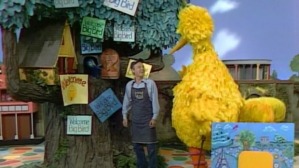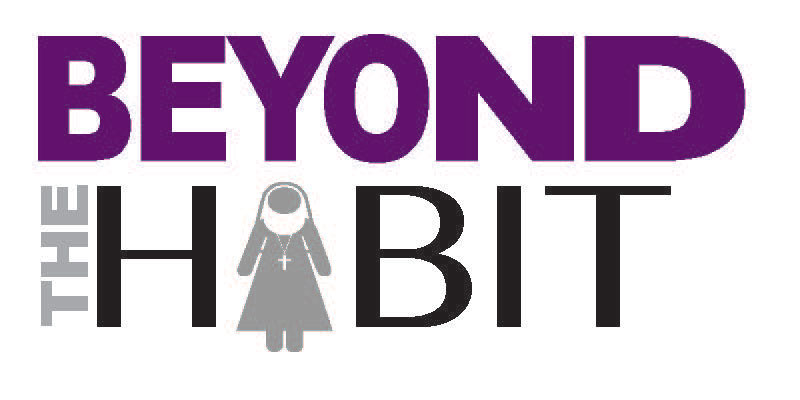“It’s a beautiful day in the neighborhood, a beautiful day for a neighbor, would you be mine? Could you be mine?” – Fred Rogers
 It’s hard for me to imagine a time when Mister Rogers Neighborhood (or its contemporary, animated spinoff, Daniel Tigers Neighborhood) didn’t exist. Clad in tennis shoes and cardigan sweaters, Mister Rogers sang his way into millions of homes, teaching us all some of the most important lessons in life: how to share, how to be kind, how to use our imaginations. And while all of these lessons still stick with me, and I would venture to guess with many of us, it’s the opening song that plays in my head when I think of Fred Rogers and his world. Would you be, could you be, my neighbor?
It’s hard for me to imagine a time when Mister Rogers Neighborhood (or its contemporary, animated spinoff, Daniel Tigers Neighborhood) didn’t exist. Clad in tennis shoes and cardigan sweaters, Mister Rogers sang his way into millions of homes, teaching us all some of the most important lessons in life: how to share, how to be kind, how to use our imaginations. And while all of these lessons still stick with me, and I would venture to guess with many of us, it’s the opening song that plays in my head when I think of Fred Rogers and his world. Would you be, could you be, my neighbor?

Fred Rogers and Daniel Tiger share a sense of style
Of course I wanted to be Mister Rogers’s neighbor! Who wouldnt’ want to be invited into his cute little house, to feed his fish, get the mail from Mr. McFeely, and follow trolley to the neighborhood of make-believe? But as a child, I still thought of my neighbors as the people who lived on my block. I could tell you all about the Fernando’s, who lived next door and raised rabbits, or Harry O., who lived across the street and came over to visit and eat popsicles on the front porch. I wanted to be Mister Rogers’s neighbor, but I thought that meant that I wanted my family to move so we could live next door to him (maybe across from Sesame Street? I was always trying to figure out the geography of the PBS world my favorite characters inhabited to decide what real estate would be best.)

Big Bird checks out real estate in the neighborhood
Now, as I think about Mister Rogers as an adult, I can’t help but wonder if he was ever taught by Sisters from the Congregation of St. Joseph. Committed to “move towards profound love of God and love of neighbor without distinction,” the Congregation has been doing neighborly work for hundreds of years. The first Sisters of St. Joseph in LePuy, France, were tasked to go out and do whatever would bring about greater unity in society. These women worked to help all people, not just the person who happened to be next door. While they didn’t have Mister Rogers’s song to bring people together, they worked to bring harmony to the world in other ways.

What makes a neighbor? It’s not just geography.
Today, we still work to “love and serve the dear neighbor,” much of it the same kind of work that Mister Rogers encouraged us to do as children: to be kind to the lonely, the alienated and the sick. To promote unity, peace and justice in society. To care for all creation in our universe. We understand that our neighbors are not only those from our block, from our city, or even from our country. The dear neighbor is all of us. Every person, in every city, in every country around the world.

Mister Rogers loved all neighbors, kings and owls!
While Mister Rogers helped me learn how to tie my shoes and how to treat others, as a child I still didn’t understand the one important message that he was trying to convey in his song – we can all be his neighbor, because we are all neighbors with each other, no matter where we live. In this world, the unity and kindness that Mister Rogers encouraged can sometimes seem difficult to come by. But isn’t it easier to be kind to a neighbor, a person you share space with and greet with a wave as you get home from work? If we think of each other as neighbors, might it be easier to treat each other with the compassion and respect that we’re called to by God? And so I ask, in all earnestness, would you be, could you be, my neighbor? 
About the Author
 Elizabeth Powers is the Electronic Communications Coordinator for the Congregation of St. Joseph and manages the blog, Beyond the Habit. She sometimes acts as a contributing writer when faced with a particularly poignant, sister-inspired moment. She loves reading, writing, Harry Potter, and PBS.
Elizabeth Powers is the Electronic Communications Coordinator for the Congregation of St. Joseph and manages the blog, Beyond the Habit. She sometimes acts as a contributing writer when faced with a particularly poignant, sister-inspired moment. She loves reading, writing, Harry Potter, and PBS.

I heard him speak once and his talk was wonderful…so comforting, so peaceful
LikeLiked by 1 person
What a wonderful memory, Elizabeth!
LikeLike